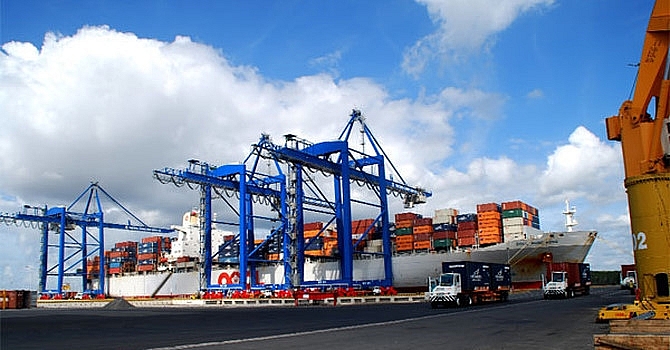Vietnam’s economic growth forecast to reach 6.9 per cent this year
 |
| The ADB has lowered Vietnam's growth forecast to 6.9 per cent this year |
According to statistics published by the ADB, the Vietnamese economy continued to perform strongly in the first half of 2018, although external and domestic challenges could affect the country’s growth outlook for this year and the next.
In an update of its flagship annual economic publication, Asian Development Outlook (ADO) 2018, the ADB forecasts Vietnam’s economic growth at 6.9 per cent for 2018, while retaining its 2019 growth forecast of 6.8 per cent.
| Economic growth will likely hold up well in the near-term, buoyed by resilient domestic demand, improved business conditions, and stable macroeconomic environment. |
“The economic performance was broad-based, driven by vigorous manufacturing expansion, bumper agricultural production, robust performance in the services sector, resilient domestic consumption, and strong investment fuelled by FDI and domestic enterprises,” said Eric Sidgwick, ADB country director for Vietnam.
Economic growth will likely hold up well in the near term, buoyed by resilient domestic demand, improved business conditions, and stable macroeconomic environment. Anticipated increase in public capital expenditure in the second half of the year is expected to boost the growth in investment.
The Vietnamese economy, however, remains vulnerable to external and domestic challenges. Growth moderation in the major economies, such as the People’s Republic of China, the European Union, and Japan, may dampen the aggregated demand of global trade.
The escalating trade frictions around the world could adversely impact the export performance and FDI inflows to Vietnam. Inflationary pressure is likely to persist over the near-term because of increases in international oil prices and an upsurge in food prices. Therefore, ADB has revised Vietnam’s inflation to 4.0 per cent in 2018 and 4.5 per cent for 2019, up from the April estimates of 3.7 and 4.0 per cent, respectively.
ADB is committed to achieving a prosperous, inclusive, resilient, and sustainable Asia and the Pacific, while sustaining its efforts to eradicate extreme poverty. Established in 1966, it is owned by 67 members—48 from the region. In 2017, ADB’s operations totalled at $32.2 billion, including $11.9 billion in co-financing.
What the stars mean:
★ Poor ★ ★ Promising ★★★ Good ★★★★ Very good ★★★★★ Exceptional
 Tag:
Tag:
Related Contents
Latest News
More News
- Businesses ramp up production as year-end orders surge (December 30, 2025 | 10:05)
- Vietjet chairwoman awarded Labour Hero title (December 29, 2025 | 13:06)
- How to unlock ESG value through green innovation (December 29, 2025 | 10:03)
- AI reshapes media and advertising industry (December 29, 2025 | 08:33)
- FPT and GELEX sign deal to develop blockchain tech for global markets (December 29, 2025 | 08:29)
- Vietnam’s GDP forecast to grow by 9 per cent in 2026 (December 29, 2025 | 08:29)
- Women entrepreneurs are key to Vietnam’s economic growth (December 29, 2025 | 08:00)
- Vietnam's top 500 value-creating enterprises announced (December 27, 2025 | 08:00)
- The PAN Group shaping a better future with ESG strategy (December 26, 2025 | 09:00)
- Masan Consumer officially lists on HSX, marking the next phase of value creation (December 25, 2025 | 13:20)





























 Mobile Version
Mobile Version